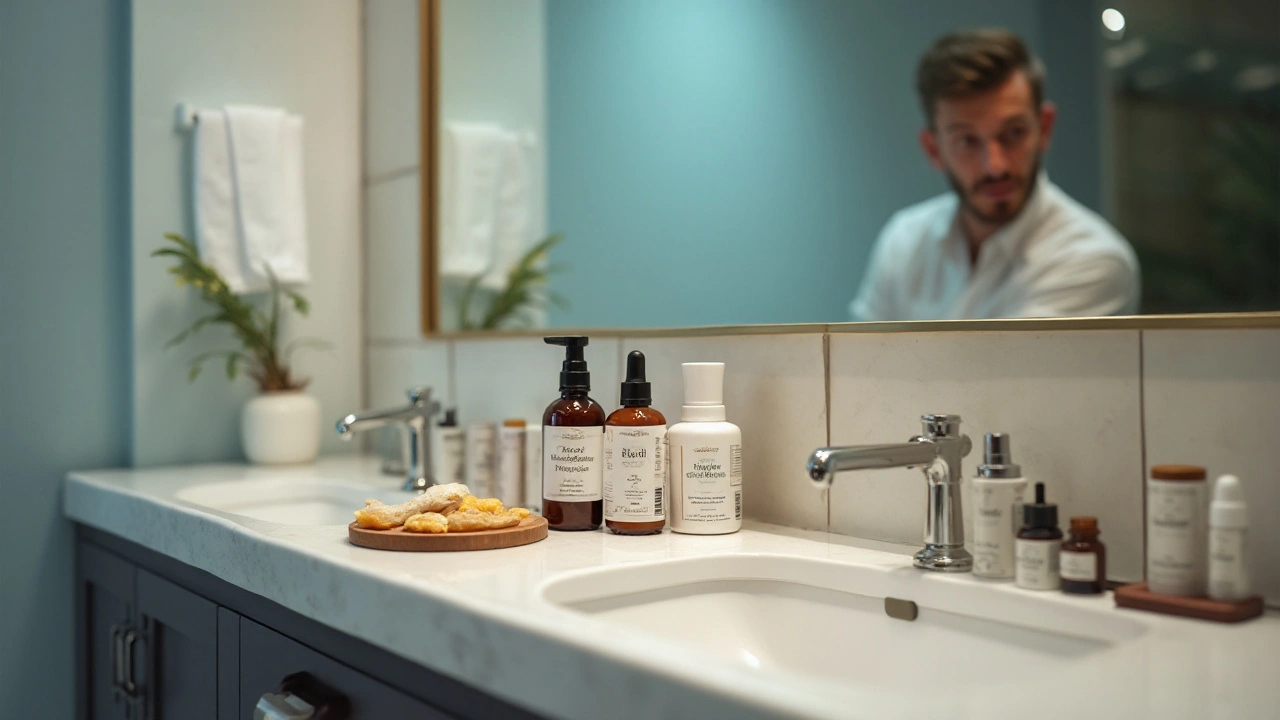Propecia alternatives: what actually works for hair loss
If Propecia (finasteride) isn’t right for you—because of side effects, cost, or contraindications—you still have real options. Some alternatives aim at the same hormonal pathway, some work on the scalp, and others replace hair. Below I walk through the most common choices, how fast they act, and what to check with your doctor.
Medical options
Minoxidil (Rogaine). This is an over-the-counter topical that widens blood vessels in the scalp and helps hair grow. It works for many people, especially on the crown. Expect 3–6 months to see thicker hair; stop and growth usually reverses within months. Side effects are rare but can include scalp irritation.
Dutasteride. This prescription pill blocks more of the DHT hormone than finasteride. It often gives stronger results but may increase risk of sexual side effects. Doctors sometimes use it off-label for male pattern hair loss—talk to a clinician about pros and cons and dose options.
Topical finasteride. If you want the benefits of finasteride with potentially fewer systemic effects, topical formulations exist. Early studies suggest they lower scalp DHT with less impact on blood DHT, but quality varies—use products backed by clinical data and a prescriber’s guidance.
Saw palmetto and other supplements. Saw palmetto is commonly marketed as a natural DHT blocker. Evidence is modest and inconsistent. If you try supplements, use them as a low-cost experiment, not a replacement for proven drugs, and mention them to your doctor.
Procedural and device options
Platelet-rich plasma (PRP). PRP uses your blood’s growth factors injected into the scalp. Many people see thicker hair after a few sessions. Results vary; maintenance every few months is common.
Low-level laser therapy (LLLT). Home devices or in-office lasers can stimulate hair growth for some users. They’re painless and have minimal side effects. Expect months of regular use to judge benefit.
Hair transplant. For stable, advanced hair loss where donor hair is good, transplants give the most visible, long-term change. It’s a surgical option with recovery time and cost to consider. Talk to an experienced surgeon about the pattern of future loss so you don’t end up needing more grafts later.
Combination approach. Many people get the best results combining treatments—minoxidil plus an oral or topical DHT blocker, or PRP with a drug. Combinations can speed results and help maintain gains.
How to choose: consider your age, hair-loss pattern, tolerance for side effects, cost, and how quickly you want results. Women of childbearing age should avoid finasteride and dutasteride due to risk to a male fetus. If you’re unsure what’s causing hair loss—thyroid issues, nutritional problems, or medication-induced shedding—get basic labs checked before committing to long-term therapy.
Want more detail? Search our site for dermatologist-backed guides and real-world tips on monitoring side effects, timelines, and costs. And always review options with a dermatologist or hair-loss specialist to pick the safest, most effective plan for you.
Discover six effective alternatives to Propecia for hair loss in 2024. This article explores diverse treatments ranging from topical solutions and laser therapy to natural options. Each alternative's benefits and limitations are detailed to help you choose the most suitable method for hair restoration. With a focus on real-world effectiveness and ease of use, uncover the future of hair care and regrowth.
View Details
